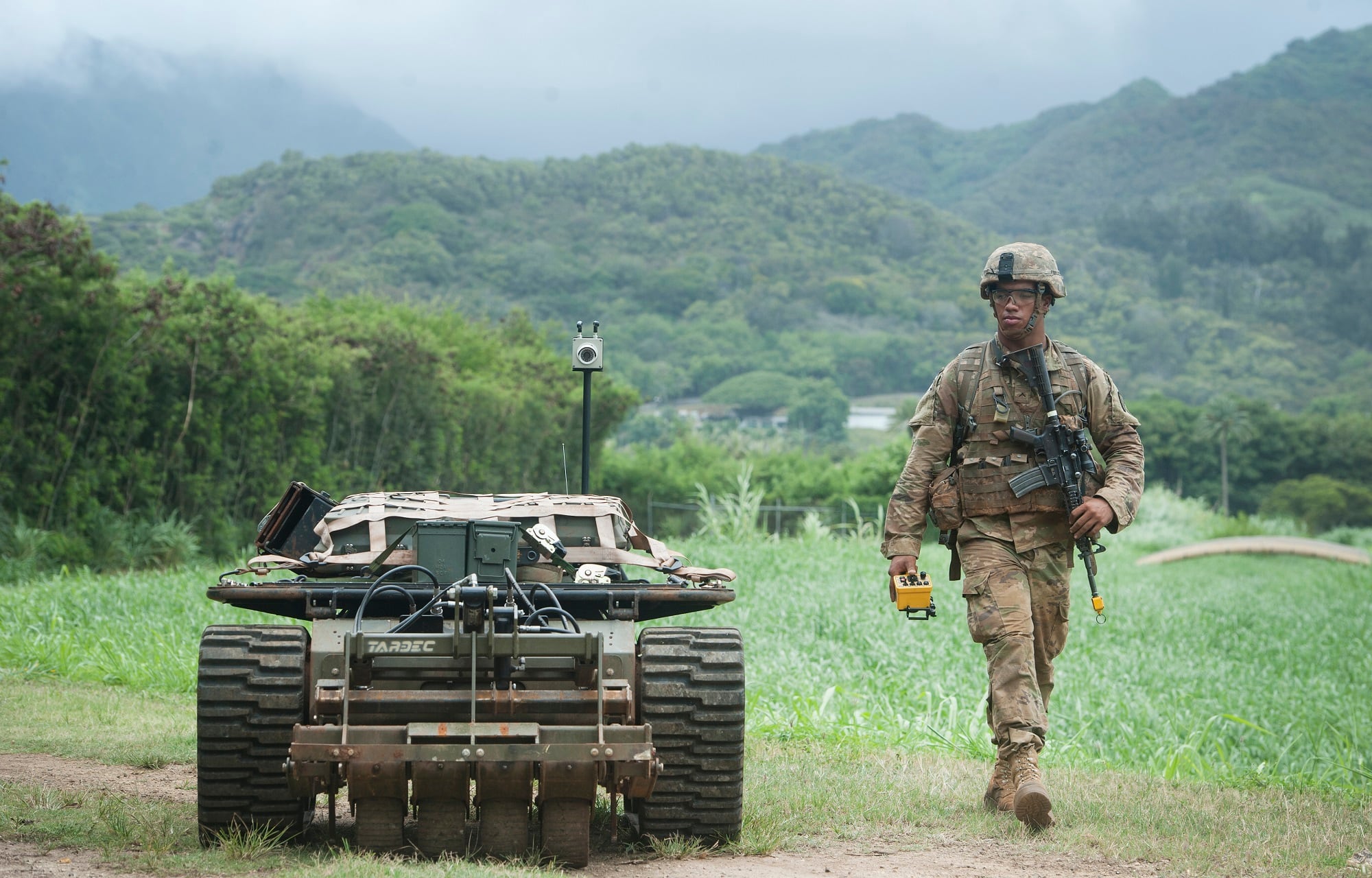Ground and aerial robots are changing the way dismounted troops fight in fundamental ways, experts say.
Locate, close with and destroy the enemy by fire and maneuver, a foundational concept for combat arms, especially the leading edge of the Army and Marine infantry, is being dissected with the employment of robots.
“It also changes the way we look at the battlefield,” Lt. Col. Kevin Reilly of the Marine Corps Warfighting Lab said at the National Defense Industry Association Ground Robotics Capabilities Conference Tuesday on a panel alongside other military and industry experts.
The drones not only give troops eyes on a dangerous area, they allow for additional sensors to pull information into the larger battlefield picture.
Reilly noted that robots, be they aerial drones that have been employed for decades or newly arrived man-packable ground robots, are cutting into a key portion of that concept ― close with.
The robots increase standoff, allowing soldiers and Marines to figure out where all the threats are before engaging.
And aerial drones are partnering with ground robots in innovative ways.
David Viens with the company Endeavor Robotics, showed the audience a video of a Pez-dispenser-like box that held batteries for a delivery drone and small ground robots.
The drone-focused company Asylon put the system together in a matter of weeks to demonstrate for Special Operations Command officials, Viens said.
The delivery drone landed, picked up a ground robot, dropped it on a rooftop and then returned for a battery change and another ground robot to deliver.
Drones delivering drones.
Those ground drones can carry sensors and be placed in key points along a battlefield, removing the need for humans to be in those dangerous spots just to gather information, Viens said.
“You no longer have to put Cav Scouts, (Special Operations Forces) or infantry in these locations,” Viens said.
Combine that array of movable sensors with artificial intelligence and the battlefield portrait just got clearer.
“I think you’re going to see more machine learning and computer vision that allows those systems to provide critical information,” Reilly said. “That will give you a more robust picture without having to analyze all of the data.”
An example he gave was to program the computers to seek out key indicators that would give the dismounted troops practical information such as vehicles in an open area or a mass of armed infantry in their region, all drawing from multiple sensor to deliver that data.
Todd South has written about crime, courts, government and the military for multiple publications since 2004 and was named a 2014 Pulitzer finalist for a co-written project on witness intimidation. Todd is a Marine veteran of the Iraq War.





